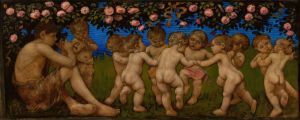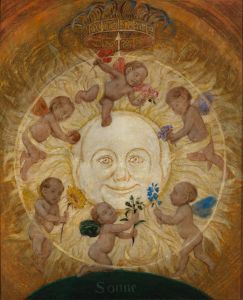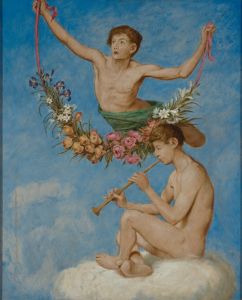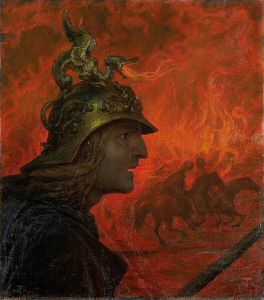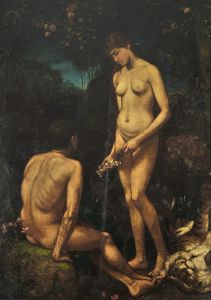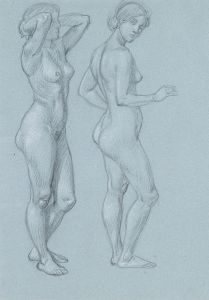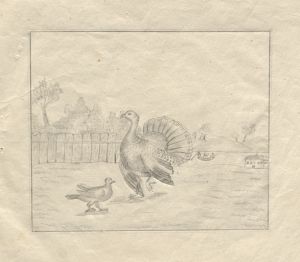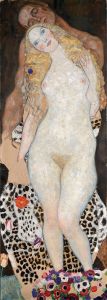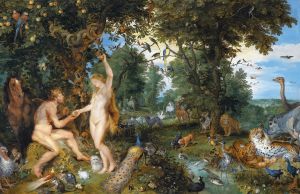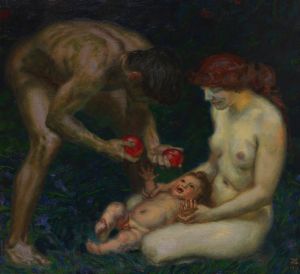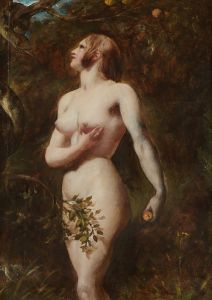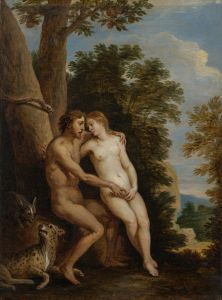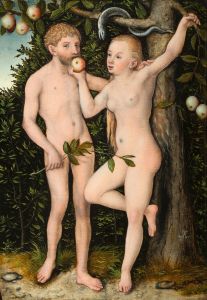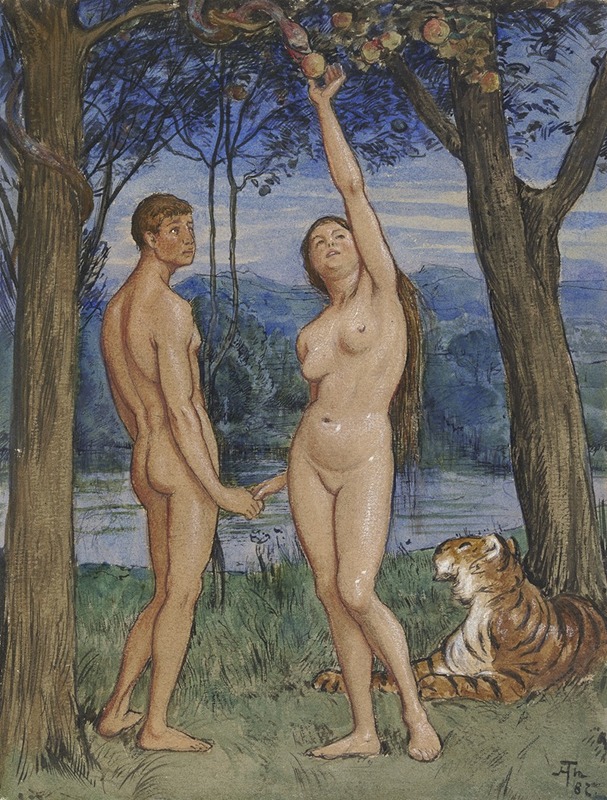
Adam and Eve
A hand-painted replica of Hans Thoma’s masterpiece Adam and Eve, meticulously crafted by professional artists to capture the true essence of the original. Each piece is created with museum-quality canvas and rare mineral pigments, carefully painted by experienced artists with delicate brushstrokes and rich, layered colors to perfectly recreate the texture of the original artwork. Unlike machine-printed reproductions, this hand-painted version brings the painting to life, infused with the artist’s emotions and skill in every stroke. Whether for personal collection or home decoration, it instantly elevates the artistic atmosphere of any space.
Hans Thoma was a German painter born on October 2, 1839, in Bernau in the Black Forest region of Germany. He is known for his landscapes, portraits, and mythological scenes, often infused with a sense of realism and a touch of romanticism. One of his notable works is "Adam and Eve," which reflects his interest in biblical themes and his ability to blend them with his unique artistic style.
"Adam and Eve" by Hans Thoma is a painting that depicts the biblical figures of Adam and Eve, the first man and woman according to Judeo-Christian tradition. Thoma's interpretation of this iconic story showcases his skill in capturing human figures and his attention to detail. The painting is characterized by its serene and harmonious composition, which is a hallmark of Thoma's work.
In this painting, Thoma presents Adam and Eve in a natural setting, surrounded by lush greenery and a tranquil landscape. The figures are depicted in a realistic manner, with careful attention to anatomical details and expressions. Thoma's use of color is subtle yet effective, creating a sense of depth and atmosphere that draws the viewer into the scene. The natural environment surrounding the figures is depicted with a sense of tranquility and beauty, emphasizing the harmony between humans and nature before the fall.
Thoma's "Adam and Eve" reflects his broader artistic interests and influences. He was part of the German Romantic movement, which often sought to explore themes of nature, mythology, and the human condition. His work also shows the influence of the Renaissance and Baroque masters, whose techniques and compositions he admired and studied. Thoma's ability to blend these influences with his own vision is evident in "Adam and Eve," where he combines a classical approach with a modern sensibility.
Throughout his career, Hans Thoma was celebrated for his ability to capture the essence of his subjects, whether they were landscapes, portraits, or mythological scenes. His works often convey a sense of peace and introspection, inviting viewers to contemplate the deeper meanings behind the images. "Adam and Eve" is no exception, as it encourages reflection on the themes of innocence, temptation, and the relationship between humanity and the natural world.
Hans Thoma's contributions to art were recognized during his lifetime, and he held several prestigious positions, including director of the Karlsruhe Academy. His legacy continues to be appreciated by art enthusiasts and scholars, and his works are held in various collections and museums. "Adam and Eve" remains an important part of his oeuvre, exemplifying his skill as a painter and his ability to convey complex themes through his art.





